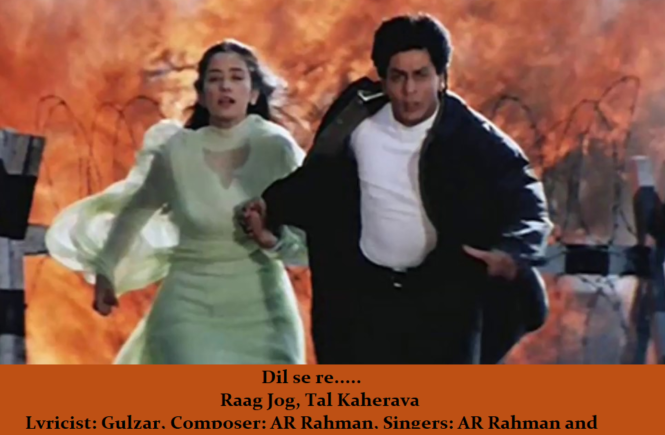Raaga Based Song of the Day: Dil se re….
Raag Jog, Tal Kaherava
Today, we turn to living-legend and genius AR Rahman, the winner of more Filmfare Awards (Ten) than any other Music Director in history. Even though I have posted a song by him Tu hi re in my other songs series (Please see: ‘Songs That Tug At Your Emotions #22‘) I haven’t given you any of his songs in the present series on Raaga Based Songs.
After this post, I have just two to go before I finish a hundred posts in the present series before Diwali.
If the earlier AR Rahman song was from a Mani Ratnam movie Bombay, this song is from another Mani Ratnam film: the 1998 movie Dil Se in which for the production Ram Gopal Verma and Shekhar Kapur joined hands with Mani Ratnam. It was penned by Gulzar, composed by AR Rahman and sung by AR Rahman, Anuradha Sriram, Anupama & Febi Mani. Pink Floyd bass guitarist Guy Pratt played bass in this song.
This is the first time I am taking up a song in this raaga.
We have completed ninety-five days of Raaga Based Songs of the Day. Our first post in the series was titled ‘Raaga Based Song Of The Day #1’ and the song was a Mohammad Rafi and Lata Mangeshkar song from the 1970 Shakti Samanta movie Pagla Kahin Ka: Tum mujhe youn bhula na paoge. It is in Raag Jhinjhoti, Tal Kaherava.
Our ninety-seventh post or the last post here was titled ‘Raaga Based Song Of The Day #97‘ and the song was a Yesudas and Hemlata song from the 1976 Basu Chatterjee movie Chitchor starring Amol Palekar, Zarina Wahab and Vijayendra: Tu jo mere sur mein sur mila le. It is also in Raag Pilu Tal Kaherava.
This blog has a number of posts on Raaga based songs in Hindi movies titled similarly; for example: ‘The Best Raaga Based Songs in Hindi Movies – Raaga Darbari Kanada – Part III‘.
In the last ninety-seven days of sharing Raaga based songs of the day, I have given you songs based on Raag Jhinjhoti, Gara, Bhimpalasi, Madhuvanti, Shivaranjani, Bihag, Pahadi, Sarang, Pilu, Bhairavi, Khammaj, Charukesi, Kalyan or Yaman, Desh, Malgunji, Kirwani, Kedar, Bageshri, Megh Malhar, Bhupali, Ahir Bhairav, Malkaush, Mand, Adana, Kafi, Rageshri, Jaunpuri, Tilang, Janasammohini, Chayanat, Shuddha Kalyan, Gaur Sarang, Jogiya, Asavari, Maru Bihag, Durga, Lalit, Puria Dhanashri, Bhinna Sahdja, Sohani, Multani, Patdeep, Jaijaiwanti, Tilak Kamod, Hemant, Basant Mukhari, Gujri Todi, Kalavati, Hamir, Bhatiyar, Gawati, Shyam Kalyan, Gorakh Kalyan, Madhamat Sarang, Manj Khammaj, Darbari Kanada, Vibhas, Shankara, Bahar, Nand and Mian Ki Malhar; making it a total of 61 raagas. The raagas that have been repeated so far are Pahadi, the raaga of my home place in the Himalayas, Maru Bihag, Raag Kirwani, Jhinjhoti, Bhairavi, Gara, Basant Mukhari, Malkauns, Bhairavi, Mand, Sohani, Madhuvanti, Shivaranjani and Adana. Today, I am giving you a new Raag Jog for the first time.
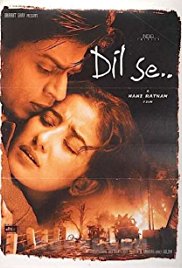
Today’s song is from the 1998 film Dil Se that was produced (together with Ram Gopal Verma and Shekhar Kapur) and directed by Mani Ratnam and also written by him together with Tigmanshu Dhulia. The film starred Shahrukh Khan, Manisha Koirala and Preity Zinta.
The movie won AR Rahman one of his ten Filmfare Awards and Gulzar one of his twenty Filmfare Awards (of course for the song Chaiya Chaiya (for which Sukhwinder Singh won the Best Male Playback Singer Award. The movie won two National Awards and Six Filmfare Awards including one for Preity Zinta for Best Female Debut.
Lets understand the story-line to see where the song fits in the movie:
Shahrukh Khan plays Amarkant Varma, a programme executive for All India Radio. Whilst covering festivities in Assam, Amar has a chance encounter with Meghna (Manisha Koirala) at Haflong railway station. He doesn’t know her name but she keeps appearing in his life (for example in Lumding where she denies having met him earlier). He is of course much fascinated by her and describes his encounter with her on the radio. She hears this and next he sees her at the Post Office.
And now she intervenes telling him to leave her alone but he stalks her and tells her that he is in love with her. She tells him she is married and gets him beaten up by two men. He comes to know later that she feigned marriage and the men are probably her brothers.
Once again she does the vanishing trick and he searches for her. He learns from a Public Call Office owner that she used to make calls to Ladakh. Amar travels to Leh to find her. Here a suicide bomber is chased to death by the army and Amar spots her again. This time she feigns to be his wife when a search is going on for suspected terrorists in the bus by which they travel.
For the first time he learns her name: Meghna. She again vanishes. It is later revealed that Meghna is part of a Liberationists group which plans multiple suicide attacks in New Delhi at the upcoming Republic Day celebrations).
Amar returns to his home in Delhi, where his family has found Preeti Nair (Preity Zinta) from Kerala as a potential bride for him. Amar agrees to marry Preeti because he has no hope that he will ever meet Meghna again.
On a date with Preeti, Amar spots one of Meghna’s associates, Kim. Amar chases him down to Connaught Place, where the man kills himself with a cyanide pill after being stopped by local police. The case is handed over to CBI.
Amar is a prime suspect. This time Meghna visits Delhi to get a job at All India Radio and stay with him to escape scrutiny by security forces. He learns that her real name is Moina and she is a rape victim of the army. Her mission, with her associates, is to target the Republic Day Parade and the President of India.
He tries to prevent all this claiming that his only motive is that he is in love with her. He embraces her whilst she is armed as a suicide bomber and they are both blown to smithereens.
He was in love with her Dil Se and she was seeking revenge with government of India Dil Se for being a rape victim as a child.
That’s the significance of this song in the movie. It is the title song and tells the story of the movie in a flash.
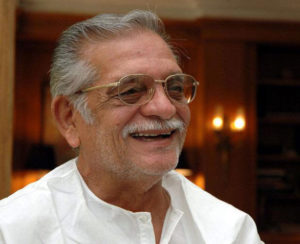 The song has been penned by Gulzar. Lets talk a bit about Gulzar, the most versatile Lyricist that we have had in Hindi films: He has been poet, lyricist, director, dialogue, story and screen-play writer. He was awarded Padma Bhushan, the third-highest civilian award, the Sahitya Akademi Award and the Dadasaheb Phalke Award — the highest award in Indian cinema. He has won several Indian National Film Awards, 20 Filmfare Awards, one Academy Award and one Grammy Award.
The song has been penned by Gulzar. Lets talk a bit about Gulzar, the most versatile Lyricist that we have had in Hindi films: He has been poet, lyricist, director, dialogue, story and screen-play writer. He was awarded Padma Bhushan, the third-highest civilian award, the Sahitya Akademi Award and the Dadasaheb Phalke Award — the highest award in Indian cinema. He has won several Indian National Film Awards, 20 Filmfare Awards, one Academy Award and one Grammy Award.
He was born as Sampooran Singh Kalra on 18 Aug 1943 in Dina, Jhelum District (now in Pakistan). After Partition Sampooran’s family shifted to Bombay. In his early boyhood and manhood days, he eked out a living by taking up various odd jobs including as a mechanic at a garage. He was fond of writing poetry and assumed the name of Gulzar Deenvi and later Gulzar.
He started his career as a songwriter with the music director Sachin Dev Burman for the Bimal Roy movie Bandini (1963) penning just one song: Mora gora rang layle whilst Shailendra penned the rest.
From that day on wards there has never been any looking back.
Gulzar has won the Filmfare Awards the maximum number of times: twenty; eleven of these have been for Best Lyricist. The next in the line is AR Rahman who has one fifteen Filmfare Awards including ten as Best Music Director.
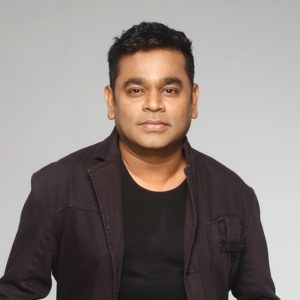 The song belongs to its composer Allah Rakha Rahman more than to anyone else. Just as, the other day, we took up Surbahar player Annapurna Devi (Please see: ‘Raaga Based Song Of The Day #88‘) who became a Hindu after having been born a Muslim as Roshana Khan, AR Rahman was born a Hindu, Dileep Shekhar, on 06 Jan 1967 and converted to Islam in 1989, at the age of 22. In recent past, no other composer and music director has occupied space in our hearts and minds more than Rahman. Rahman’s films career started with the 1992 Tamil movie Roja, also a Mani Ratnam movie and also starring Arvind Swamy, though with Madhoo and not Monisha Koirala. Roja not just won the National Award for Best Film on National Integration but was later dubbed in Hindi, Marathi, Telugu and Malyalam. In 2009, when AR Rahman won two Oscars (for Best Song (Jai ho)) and Best Original Score (together with Gulzar)(Slumdog Millionaire) many of us felt that the Roja songs and music were better than the Slumdog Millionaire. His first film Roja won him the National Award for Best Music Director. One of the songs from the movie is a favourite: Bharat hamako jaan se bhi pyaara hai. As of 2016, Rahman has garnered four National Film Awards, 15 Filmfare Awards and 16 Filmfare Awards South, a record for an Indian composer.
The song belongs to its composer Allah Rakha Rahman more than to anyone else. Just as, the other day, we took up Surbahar player Annapurna Devi (Please see: ‘Raaga Based Song Of The Day #88‘) who became a Hindu after having been born a Muslim as Roshana Khan, AR Rahman was born a Hindu, Dileep Shekhar, on 06 Jan 1967 and converted to Islam in 1989, at the age of 22. In recent past, no other composer and music director has occupied space in our hearts and minds more than Rahman. Rahman’s films career started with the 1992 Tamil movie Roja, also a Mani Ratnam movie and also starring Arvind Swamy, though with Madhoo and not Monisha Koirala. Roja not just won the National Award for Best Film on National Integration but was later dubbed in Hindi, Marathi, Telugu and Malyalam. In 2009, when AR Rahman won two Oscars (for Best Song (Jai ho)) and Best Original Score (together with Gulzar)(Slumdog Millionaire) many of us felt that the Roja songs and music were better than the Slumdog Millionaire. His first film Roja won him the National Award for Best Music Director. One of the songs from the movie is a favourite: Bharat hamako jaan se bhi pyaara hai. As of 2016, Rahman has garnered four National Film Awards, 15 Filmfare Awards and 16 Filmfare Awards South, a record for an Indian composer.
Gulzar and AR Rahman started together with this movie. They have worked together in twelve movies as Lyricist and Music Director.
Some of the popular songs of Gulzar with AR Rahman are: Chaiya chaiya, Jiya jale, Ai ajnabee and Satrangi re (Dil Se, 1998); Saathiya, Chupke se, Mera yaar mila de, and Chori pe chori (Saathiya, 2002); Jiya jale and Dil se re used again in 7 1/2 Phere (2005); Barso re megha megha, Jaage hain der tak, Maiyya and Aye hairati aashqi jaga mat (Guru, 2007); Main hoon yuvraaj, Shanno shanno, Tu meri dost hai, Mastam mastam and Dil ka rishta (Yuvraaj, 2008); Jai ho (Slumdog Millionaire, 2009 Both of them won Oscar); Ranjha Ranjha kardi ve, Behne de mujhe behne de and Thok de killi (Raavan, 2010); Saans mein teri saans mili to, Heer Heer na aakho adiyo, Saans, Jiya jaiya re jiya, and Jab taq hai jaan (Jab Tak Hai Jaan, 2012).
AR Rahman is so well versed with raagas that he has tried songs in raagas that were hitherto untried. Some of his most memorable numbers are: Taal se taal mila (Bhairavi), Piya Haji Ali (Maand), Columbus (Madhyamaavathi), Karite na (Maru Bihag/Hemant), Hai Rama (Puria Dhanashree) (Please see: ‘Raaga Based Song Of The Day #40‘), Deem tadare dhani (Megh Malhar), Anjali Anjali (Maand), Jiya jale (Misra Bhairavi), Boondon se baaten (Misra Kirwani), Ni main samajh gayi (Ahir Bhairavi), Mitwa (Bhupeshree or Vasanthi), Radha kaise na jale (Bhimpalasi), Chalo chalo (Chala Nathai), Mujhe rang de (Charukeshi), Chhodo meri bainyan (Patdeep), Jhoola bahon ka (Peelu), Ruth aa gayi re (Puria Dhanashree), Monalisa (Gawati), and Ghanan ghanan (Kafi).
This song, as I told you, is in Raag Jog, Tal Kaherava.
Raag Jog belongs to the Kafi thaat. Its Jati is Audhav – Audhav, which means it is pentatonic (five notes or swar) in Aaroha (ascending) and in Avroha (descending). The swar that are vrajay (missing) are Re (Rishab) and Dha (Dhaivat). Rishab is Komal and both (Shuddha in Aaroha and Komal in Avroha) Gandhars are used. Rest all swar are Shuddha. The dominant note (Vadi) is Ma or Madhyam. The raaga is a straightforward and melodious raaga. Mani Ratnam and AR Rahman have tried to contrast the soft melody against the harsh violence of terrorism. In that manner only it is somewhat similar to Louis Armstrong’s It’s A Wonderful World being used against the harsh reality of war in Barry Levinson’s 1987 movie Good Morning Vietnam starring Robin Williams. The raaga is well suited for the second prahar of the night (9 PM to Midnight).
Very few Hindi films songs have been composed in this raaga, Besides the present song, Hansraj Behl composed Naina dwar se for the 1959 movie Sawan.
I have, at various places earlier, told you about the Kaherava Tal and hence don’t feel the need to repeat it here.
Before we actually take up the song, first, lets take up the value added learning of today. From the last fifteen times we started learning about some of the leading personalities in Indian Classical Music or Shastriya Sangeet. The first one that we took up was Ustaad Asad Ali Khan, the finest Rudra Veena player in the country. Then we took up Pandit Hari Parsad Chaurasia, the greatest Bansuri player in the country. Then we talked about Ali Akbar Khan, the greatest Sarod player in the country. Then we took up Pandit Ravi Shankar, the greatest Sitar player in the world. Then we took up the greatest classical singer in the country (of Carnatic tradition): MS Subbulakshmi. Then, we took up the greatest classical singer in the country (of Hindustani tradition): Pandit Bhimsen Joshi. Then, we learnt about the Shehnai maestro Ustad Bismillah Khan. Then, we learnt about Annapurna Devi, a great Surbahar (bass sitar) player of Hindustani Classical Music. Thereafter, we took up Pandit Shiv Kumar Sharma, the grestest Santoor player in the country. Then we learnt a little more about Ustaad Alla Rakha Qureshi or simply Alla Rakha, the Tabla Maestro and father of Ustaad Zakir Hussain. Then we learnt about the master and one of the pioneers of fusion: Anand Shankar. Then we learnt about a Veena player who was also a great filmmaker: Sundaram Balachander. Then we learnt about Sarod Player Ustad Amjad Ali Khan. And then we learnt about Ustaad Zakir Hussain, the Tabla maestro. Then we learnt about Sitar Player and Composer Anoushka Shankar. And then we covered vocalist Pandit Jasraj in the last post. Finally we covered violinist L Subramaniam.
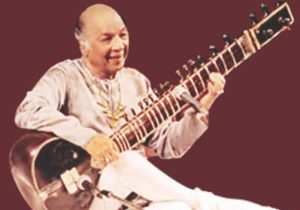
Tonight, we shall take up the great sitarist: Ustaad Vilayat Khan. He turned down all awards conferred on him by the government of India: the second, third and fourth highest; ie, Padma Vibhushan, Padma Bhushan and Padma Shri on the ground that others less deserving Sitarists have been given these awards before him. His family, he rightly claimed, had originated gayaki ang of Sitar (attempt to mimic vocal music on Sitar) and it was not recognised for this. On the same grounds he turned down Sangeet Natak Akademi Award. This makes him a unique artiste who has turned down all awards conferred on him. The only titles he accepted were the special decorations of “Bharat Sitar Samrat” by the Artistes Association of India and “Aftab-e-Sitar” (Sun of the Sitar) from President Fakhruddin Ali Ahmed.
Vilayat was born on 28 Aug 1928 in Gouripur, Mymensingh in then East Bengal in British India and current Bangladesh. His father Enayat Khan was recognised as a leading sitar and surbahar (bass sitar) player of his time, as had been his grandfather, Imdad Khan, before him. He was taught in the family style, known as the Imdadkhani gharana or Etawah Gharana, after a small city close to Agra where Imdad Khan lived.
He recorded his first 78-RPM disc at the age of 8, and gave his last concert in 2004 at the age of 75. Vilayat Khan performed at All Bengal Music Conference, as his first concert, organized by Bhupen Ghosh in Kolkata with Ahmed Jan Thirakwa on tabla. His performance at the concert organized by Vikramaditya Sangeet Parishad, Mumbai in 1944 drew the headline “Electrifying Sitar”.
Vilayat composed and conducted the score for three feature films – Satyajit Ray’s Jalsaghar (1958) in Bengali, Merchant-Ivory Productions’ The Guru (1969) in English, and Madhusudan Kumar’s Kadambari (1976) in Hindi.
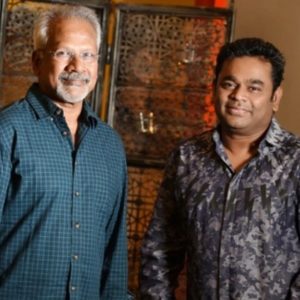
Returning to the song now. The song, as I told you, is from the 1998 Mani Ratnam movie Dil Se. Mani Ratnam and AR Rahman have had an abiding relationship that started with the 1992 movie Roja that was later remade into Hindi, Telugu, Malyalam and Marathi. When AR Rahman was conferred the Oscar for Jai Ho in 2009 movie Slumdog Millionaire, critics felt that the music of Roja was much better. As far as Hindi movies are concerned, both of them were together in Bombay (1995), Dil Se (1998), Guru (2007) and Raavan (2010).
Mani Ratnam directed the movie and the song very well. In the 1999 Berlin International Film Festival he won a special mention in Netpac Awards for this movie. This song was a chart topper of the year 1998 and this song’s lyrics in Urdu are said to be the finest. Its picturisation too got noticed. Santosh Sivan received Filmfare Award for Best Cinematography for the movie. The song has now achieved a cult status.
Ladies and gentlemen, please enjoy in Raag Jog Tal Kaherava, AR Rahman, Anuradha Sriram, Anupama & Febi Mani sing a composition of AR Rahman on the lyrics of Gulzar in the 1998 Mani Ratnam movie Dil Se starring Shahrukh Khan, Manisha Koirala and Preity Zinta: Dil se re…..
इक सूरज निकला था, कुछ तारा पिघला था
इक आँधी आयी थी, जब दिल से आह निकली थी
दिल से रे
दिल तो आखिर दिल है न, मीठी सी मुशकिल है न
पिया पिया, जिया जिया, पिया पिया
दिल से रे …
दो पत्ते पतझड़ के, पेड़ों से उतरे थे
पेड़ों की शाखों से, उतरे थे
फिर इतने मौसम गुज़रे, वो पत्ते दो बेचारे
फिर उगने की चाहत में, वो सहरों से गुज़रे
वो पत्तेए दिल दिल दिल थे, वो दिल थे दिल थे दिल दिल थे
दिल है तो फिर दर्द होगा, दर्द है तो दिल भी होगा
मौसम गुज़रते रहते हैं
दिल से दिल से दिल दिल से, दिल से रे
दिल तो आखिर दिल है न …
बन्धन है रिश्तों में, काँटों की तारें हैं
पत्थर के दरवाज़े, दीवारे.ब
बेलें फिर भी उगती हैं, और गुँचे भी खिलते हैं
और चलते है.ब अफ़साने
किरदार भी मिलते हैं
वो रिश्ते दिल दिल दिल थे, वो दिल थे दिल थे दिल दिल थे
ग़म दिल के बस चुलबुले हैं, पानी के ये बुलबुले हैं
बुझते हैं बनते रहते हैं
दिल से दिल से दिल दिल से, दिल से रे
दिल तो आखिर दिल है न …
We have intended to learn about Raaga based music whilst we entertain ourselves with Raaga based songs. So, lets, once again, take stock of our collective learning so far:
- On the first day we learnt about the Raaga system devised by Pandit Vishnu Narayan Bhatkhande, which is the prevalent system in Hindustani Classical Music and based on ten Thaats.
- On the second day we learnt about Tal or Taal.
- On the third day we learnt about characteristics of Raagas that included Swar, Jati, Thaat, Arohana and Avarohana, Vadi, Samvadi and Pakad.
- On the fourth day, we learnt about Sargam.
- On the fifth day, we learnt about notations used in Indian classical music or simply Swar Lipi.
- On the sixth day, we learnt about the Ras (sentiments) that Raagas evoke.
- On the seventh day, we learnt about various types of Swar: Shuddha, Achal, Vikrut, Komal and Teevra.
- On the eighth day, we learnt the parts of a composition in Indian Classical Music.
- On the ninth day, we learnt the names of some of the popular instruments used in Indian Classical Music.
- On the tenth day, we learnt about the sources of names of Raagas.
- On the eleventh day, we learnt about why Bhairavi is the first raag to be taught to beginners and also why it is the last in a performance.
- On the twelfth day, we learnt about Khammaj Thaat.
- On the thirteenth day, we learnt about Tal Punjabi Theka or Sitarkhani.
- On the fourteenth day, we learnt about Alap.
- On the fifteenth day, we learnt about List of Raagas (Raagmala) in my favourite book: Sri Guru Granth Sahib.
- On the sixteenth day, we learnt about tips for raaga identification.
- On the seventeenth day, we learnt the basics of Gharana system.
- On the eighteenth day, we learnt about Filmi Sangeet.
- On the nineteenth day, we learnt about the commonest Tal in Raagas: Tintal.
- On the twentieth day, we learnt about the Kafi Thaat.
- On the twenty-first day, we learnt a little more in detail about the classification of Raagas.
- On the twenty-second day, we learnt the essential differences between Bhairavi and Bhairav.
- On the twenty-third day, we learnt a little more in detail about the Jati or Jaati of a raaga.
- On the twenty-fourth day, we learnt details of Thaat Bilawal, the most basic thaat in the Bhatkhande’s system of raagas.
- On the twenty-fifth day, we learnt about Tintal.
- On the twenty-sixth day, we learnt in detail about the Raaga – Samay linkage.
- On the twenty-seventh day, we learnt about Lehar.
- On the twenty-eighth day, we learnt about the history of the Hindustani Music.
- On the twenty-ninth day, we learnt about Dhrupad.
- On the thirtieth day, we learnt about Rupaktal that I was introduced to, a few months back, by my friend Anand Desai.
- On the thirty-first day, we learnt about Khayal.
- On the thirty-second day, we learnt about Thumri.
- On the thirty-third day, we learnt about Tappa.
- On the thirty-fourth day, we learnt about Tarana.
- On the thirty-fifth day, we learnt about Tal Dipchandi (Moghali).
- On the thirty-sixth day, we learnt about Tabla.
- On the thirty-seventh day, we learnt about Kirtan.
- On the thirty-eighth day, we learnt about Pakhawaj.
- On the thirty-ninth day, we learnt about Hori.
- On the fortieth day, we learnt about Dadra.
- On the forty-first day, we learnt about Kajri.
- On the forty-second day, we learnt about Chaiti.
- On the forty-third day, we learnt about Sarangi.
- On the forty-fourth day, we learnt about Shehnai.
- On the forty-fifth day, we learnt about Sarod.
- On the forty-sixth day, we learnt about Bansuri.
- On the forty-seventh day, we learnt about Ektal and Tanpura.
- On the forty-eighth day, we learnt about Veena.
- On the forty-ninth day, we repeated our learning of Veena with a small excitement added.
- On the fiftieth day, we learnt about Dilruba/Esraj.
- On the fifty-first day, we learnt about Jaltarang.
- On the fifty-second day we learnt about Qawwali.
- On the fifty-third day, we learnt about Sitar.
- On the fifty-fourth day, we learnt about Surbahar.
- On the fifty-fifth day, we learnt about Harmonium.
- On the fifty-sixth day, we learnt about Santoor.
- On the fifty-seventh day, we learnt about Swarmandal.
- On the fifty-eighth day, we learnt about the Shruti Box.
- On the fifty-ninth day, we learnt about Alankar.
- On the sixtieth day, we learnt about singing in Aakaar.
- On the sixty-first day, we learnt about the Classification of Indian Musical Instruments.
- On the sixty-second day, we learnt a little about Carnatic Music.
- On the sixty-third day, we learnt about Natya Shastra.
- On the sixty-fourth day, we learnt about evolution of musical instruments in India down the ages.
- On the sixty-fifth day, we learnt about Riyaaz.
- On the sixty-sixth day, we looked at a list of Raagas in Hindustani Classical Music.
- On the sixty-seventh day, we learnt about the health benefits of raagas.
- On the sixty-eighth day, we learnt a little more comprehensively about the moods and emotions that raagas evoke.
- On the sixty-ninth day, we learnt about a mobile application to help identify raagas.
- On the seventieth day, we learnt about Melakarta Raagas.
- On the seventy-first day, we learnt about Sangita Makarand.
- On the seventy-second day, we learnt about TaalMala an Android application for personalized accompaniment of musical instruments during Riyaaz or even during Concert.
- On the seventy-third day, we learnt about Indian Classical Ragas, an Android application for mobile phones.
- On the seventy-fourth day, we learnt about Saregama Classical, another application for Classical Raagas.
- On the seventy-fifth day, we learnt about a free online service available to learn Indian Classical Music.
- On the seventy-sixth day, we learnt about List of Hindustani Classical Musical Festivals in India and Abroad.
- On the seventy-seventh day, we learnt about List of Carnatic Musical Festivals in India and Abroad.
- On the seventy-eighth day, we learnt about Jhaptal.
- On the seventy-ninth day, we learnt about Ektal.
- On the eightieth day, we learnt about Tivra Tal.
- On the eighty-first day, we learnt about the greatest Rudra Veena player ever: Ustaad Asad Ali Khan.
- On the eighty-second day, we learnt about the greatest Bansuri player alive: Pandit Hariprasad Chaurasia.
- On the eighty-third day, we learnt about the best Sarod player in the country: Ustaad Ali Akbar Khan.
- On the eighty-fourth day, we learnt about the greatest Sitar player in the world: Pandit Ravi Shankar.
- On the eighty-fifth day, we learnt about the greatest Indian vocalist of Carnatic tradition: MS Subbulakshmi.
- On the eighty-sixth day, we not just learnt about the greatest vocalist of Hindustani tradition: Pandit Bhimsen Joshi but also learnt about Tal Hinch.
- On the eighty-seventh day, we learnt about the Shehnai maestro Ustaad Bismillah Khan.
- On the eighty-eighth day, we learnt about Annapurna Devi, the greatest Surbahar player in India.
- On the eighty-ninth day, we learnt about Pandit Shiv Kumar Sharma, the greatest Santoor Player in the country.
- On the ninetieth day, we learnt about Ustaad Alla Rakha, the Tabla maestro.
- On the ninety-first day, we learnt about Anand Shankar, the great fusion musician from Bengal.
- On the ninety-second day, we learnt about Sundaram Balachander, the great Veena player and film-maker.
- On the ninety-third day, we learnt about Ustaad Amjad Ali Khan, the great Sarod player.
- On the ninety-fourth day, we learnt about the Tabla maestro: Ustaad Zakir Hussain.
- On the ninety-fifth day, we learnt about the Sitar player and Composer: Anoushka Shankar.
- On the ninety-sixth day, we learnt about the Vocalist Pandit Jasraj.
- On the ninety-seventh day, we learnt about the great violinist L Subramaniam.
- And today, on the ninety-eighth day, we learnt about one of the greatest sitarists: Ustaad Vilayat Khan.
There is much more still to be learnt and enjoyed.
Please stay tuned!
